Picture this: You’re at a party discussing your finances, and someone casually drops, “I’m rethinking my 401k plan sponsor versus my 401k plan administrator!” You laugh, nod, and think, “Wait, what did I just hear?” If you’re scratching your head wondering whether you should be hosting the retirement bash or the backstage crew running the show, you’re in the right place. Grab your avocado toast and settle in, because we’re about to break down the often-confusing world of 401k plan management in a way that’s as engaging as your favorite TikTok thread and just as relatable as your morning coffee run.
401k Plan Sponsor Vs 401k Plan Administrator Table of Contents
Understanding the 401k Party: Sponsor vs. Administrator
Decoding the 401k Plan Administrator
Key Responsibilities: Comparing and Contrasting the Roles
Why Millennials and Gen Z Should Care
How 401k Plan Structures Impact Your Financial Future
The Financial Wellness Factor: Maximizing Your 401k Benefits
Common Misconceptions and Pitfalls to Avoid
Financial Governance: Accountability in 401k Plans
Tech Trends and Modernizing Your 401k Experience
Resources and Community Support: Your Next Steps
Real-World Scenarios: When Roles Collide
Strategies to Advocate for a Better 401k Experience
Expert Insights: What Financial Gurus Are Saying
Steps to Optimize Your 401k: A Practical Guide
Understanding the 401k Party: Sponsor vs. Administrator
In the realm of 401k retirement plans, the terms “sponsor” and “administrator” often get bandied about like the latest slang on social media, but they serve very different roles. Imagine organizing a concert: the plan sponsor is like the band manager – the mastermind who initiates the show, designs the set, and brings everyone together – while the plan administrator is the roadie making sure all the instruments are tuned and the sound system is blasting flawlessly. In short, one sets up the party, and the other ensures the party pests and hiccups are managed with finesse.
While the terms may sound similar to a casual observer, the nuances are critical, especially if you’re laser-focused on securing your financial future with the best practices in modern retirement planning. As millennials and Gen Zers strive for financial independence and a more intentional approach to money management, understanding these differences can empower you to ask better questions at your next employer’s benefits session or even negotiate your own plan.
What Is a 401k Plan Sponsor?
Let’s kick things off by exploring the role of a 401k plan sponsor. In the grand retirement plan scheme, the sponsor is typically your employer. They’re the ones who choose to offer a 401k plan to their employees, design the plan’s features, and decide who gets what kind of benefits. In many ways, they’re the cheerleaders of your someday-rich future.
As a plan sponsor, the employer shoulders the responsibility of contracting with financial institutions, picking the mix of investment options, and setting up eligibility criteria. Think of it like curating a Spotify playlist for your future – they decide which funky beats (investment options) to include so you can groove your way into retirement.
However, being a plan sponsor isn’t just about picking investments and patting employees on the back for joining their retirement plan. It’s a role that carries serious fiduciary responsibility. This means that the sponsor must always act in the best interest of the plan participants (you, your colleagues, and anyone else signing up for the plan). They need tactical, strategic, and sometimes downright gutsy decisions to ensure that the plan remains in compliance with IRS and Department of Labor guidelines while being as beneficial as possible.
In today’s world, where transparency and accountability reign supreme, a plan sponsor must remain vigilant, adapting to regulatory changes, updating plan documents, and ensuring that the plan’s backbone is sturdy enough to support your future retirement dreams. Since retirement planning has evolved into a blend of financial strategy and lifestyle optimization, your employer’s decisions as a sponsor can significantly impact your savings, investment choices, and overall financial wellness.
Employers, especially those in fast-paced industries or startups, might even leverage the 401k plan as a competitive edge in recruiting talent. After all, who wouldn’t want to work for a company that takes care of its people’s long-term financial security? When a company is committed to nurturing your financial health, it’s a pretty good sign they’ll support you even when you’re older and possibly fashionably graying.
Decoding the 401k Plan Administrator
Now that we’ve got a good grip on the sponsor, let’s turn the spotlight on the plan administrator – the often unsung hero behind the scenes. If the plan sponsor is the band manager, the plan administrator is the stage manager ensuring that every instrument, cue, and technical detail runs seamlessly.
The plan administrator is responsible for the day-to-day operations of your 401k plan. Their tasks include handling employee enrollments, processing contributions and distributions, keeping track of investments, and ensuring that the plan runs smoothly in accordance with all the legal requirements. In some cases, the plan administrator might be an internal team at your company, while in others, a third-party firm kicks in to do the heavy lifting.
Imagine you’re at a busy festival. While the sponsor set up the event and ensured you had front-row access to your favorite acts, the administrator is the crew making sure that you actually get your merch, that no one accidentally takes your seat, and that the sound system doesn’t go haywire mid-concert. They are the troubleshooters, the organizers, and the guardians of your retirement investment’s integrity.
For many modern companies, especially those with a strong emphasis on data security and a tech-savvy workforce, having an efficient, transparent, and user-friendly plan administrator has become a tightly held secret to success. With user interfaces that can rival your favorite apps, these administrators often provide online dashboards where you can check your balances, change your investment mix, or even see projections of your glorious retirement future.
As you can see, while the sponsor sets the stage, the administrator ensures that the show goes on without a hitch. Both roles are indispensable to making sure that your 401k plan is both compliant and beneficial to you in the long run.
Key Responsibilities: Comparing and Contrasting the Roles
Let’s break it down further by comparing the key responsibilities of a 401k plan sponsor versus a 401k plan administrator. This section is like the ultimate remix battle between two roles, each with its own unique style and set of moves.
The 401k Plan Sponsor’s Main Gig
- Creating the Plan: The sponsor is the mastermind behind the initial design of the plan. This includes selecting the type of 401k (traditional, Roth, or both) and setting the rules for participation.
- Choosing Investment Options: The sponsor curates the mix of investment choices available to you, ensuring there’s a healthy balance between risk and reward.
- Fiduciary Responsibilities: As a fiduciary, the sponsor must act in your best interest, making decisions that prioritize your long-term financial well-being.
- Compliance and Legal Oversight: They ensure that the plan adheres to all regulatory requirements, including IRS guidelines and labor laws.
- Employee Communication: The sponsor is often responsible for educating employees about the plan’s benefits, enrollment procedures, and any changes that may occur.
The 401k Plan Administrator’s Jam Session
- Daily Operations: From enrolling new employees to processing regular contributions, the administrator handles the nitty-gritty day-to-day operations.
- Record-Keeping: They keep detailed records of transactions, contributions, and distributions, ensuring that everything is in tip-top shape for audits.
- Compliance Management: While the sponsor sets the stage, the administrator ensures that every operational detail complies with federal guidelines and company policies.
- User Support: Whether through a slick online portal or good old-fashioned customer service, they help answer your questions and resolve any issues that crop up.
- Reporting: The administrator provides periodic reports, letting you know how your 401k is performing and how it stacks up against your retirement goals.
In summary, the sponsor takes the lead on design, strategy, and high-level oversight, while the administrator ensures that the operational elements work in concert to maintain a reliable and efficient plan. Both roles demand attention to detail, precision, and a commitment to fostering an environment where your retirement savings can grow safely.
Why Millennials and Gen Z Should Care
If you’re part of the millennial or Gen Z crew, you’re no stranger to the idea that financial security isn’t just about a hefty paycheck at the end of the month—it’s about building a future that’s as sustainable as it is sweet. Understanding the dynamic duo of the 401k plan sponsor and administrator is your backstage pass to knowing how your retirement plan works.
For many young professionals, a 401k plan isn’t a topic you think about until your 40s. But here’s the twist: the earlier you understand and engage with your 401k plan, the more control you have over it. With compounding interest working like magic over decades, even small contributions can blossom into a formidable nest egg.
Being aware of the roles of the sponsor and administrator empowers you to ask smart questions when signing up for a job or reviewing your company’s benefits package. For example, knowing that your employer (the plan sponsor) is legally obligated to act in your best interest might just give you the confidence to investigate further if something smells fishy. And if the plan administrator’s online interface looks clunky or outdated, maybe it’s time to ask if there are more modern alternatives that can better serve your tech-forward lifestyle.
In today’s fast-paced digital world where transparency and authenticity are the name of the game, having a 401k plan that is well-managed can be as reassuring as knowing your favorite app is constantly updating with the latest features. Ultimately, knowledge is power, and understanding these roles means you’re better equipped to optimize your retirement planning strategy, ensuring you’re not just working hard now but also planning smartly for later.
How 401k Plan Structures Impact Your Financial Future
The structure of your employer’s 401k plan can make a significant difference in the overall performance of your retirement savings. Both the plan sponsor and the plan administrator play pivotal roles in shaping this structure. While the sponsor’s decisions on plan design and investment selection might seem abstract, they have real-life consequences for how your money grows over time.
Consider this: if your plan sponsor carefully selects a diversified portfolio with a balanced mix of stocks, bonds, and perhaps some index funds that ride the waves of the market, you’re more likely to see steady growth. On the flip side, if the investment options are limited or heavily skewed toward high-risk choices without proper support, your portfolio might fare more like a roller coaster than a smooth ride.
Meanwhile, the plan administrator’s efficiency in handling transactions and providing user-friendly insights can directly affect your investment decisions. A robust, tech-forward administration system means you can monitor your account, change contributions, or rebalance your portfolio without jumping through endless hoops. Essentially, a well-run administration can help you stay on top of your financial game, providing clarity in a sometimes murky world of retirement planning.
Your future self will thank you if you take the time to understand how these roles influence your 401k. It’s akin to knowing the difference between streaming music on high quality versus low quality—one clearly sets you up for an epic symphony of retirement success.
The Financial Wellness Factor: Maximizing Your 401k Benefits
Let’s be real: managing your finances can sometimes feel like trying to solve an intricate puzzle without the picture on the box. But here’s the secret – when you truly understand the roles behind your 401k plan, you’re better positioned to maximize its benefits and contribute to your financial wellness.
For instance, if you’re aware that the plan sponsor has chosen a set of investment options carefully curated to balance risk with reward, you can align your long-term financial goals with these options. Meanwhile, if the plan administrator offers an intuitive platform with detailed analytics, you can track your performance like a boss and adjust your strategies on the fly.
What does this mean for you? More informed decisions, improved retirement savings, and that warm, fuzzy feeling knowing you’re taking control of your financial destiny. Investing time now to decipher these roles can lead to smarter choices later, ultimately resulting in a retirement plan that doesn’t just keep up with inflation, but leaves it in the dust.
And let’s not forget: the empowerment that comes from understanding your financial tools is priceless. So next time you’re navigating your 401k options, you’ll have the insider knowledge to ask, “Are we optimizing this plan like a true financial influencer?” and perhaps even suggest improvements where needed.
Common Misconceptions and Pitfalls to Avoid
Even in the realm of 401k plans, misinformation spreads faster than that viral meme on Instagram. There are plenty of myths floating around about what a plan sponsor does versus what an administrator is responsible for. One of the biggest misconceptions is that the administrator is partially responsible for investment performance. In reality, while they manage the day-to-day logistics, it’s the sponsor who determines the investment menu.
Another pitfall is assuming that a flashy online portal equals a superior plan. While a user-friendly interface is certainly a plus and a sign that the plan administrator is keeping up with modern trends, it doesn’t necessarily mean that the underlying investment options are well chosen by the sponsor. In other words, don’t be seduced solely by aesthetics – dig deeper.
There’s also confusion about fees. Often, you might think that low administrative fees automatically translate to high returns. However, low fees are just one piece of the puzzle. The sponsor’s choices in terms of investment options, asset allocation, and plan features influence overall performance even more. Always examine the fee structure in conjunction with the available investment options and performance history.
Finally, avoid the temptation to take a hands-off approach. Just because your retirement plan is set up by your employer doesn’t mean you can sleep on the job. Regularly reviewing your plan, knowing who to call when questions arise, and even advocating for improvements are all part of a proactive financial strategy.
Financial Governance: Accountability in 401k Plans
Accountability is the name of the game in managing any retirement plan, and the interplay between the sponsor and administrator is no exception. The plan sponsor, as the fiduciary, is legally obligated to operate the plan for the benefit of its participants. This means that they must not only select robust investment options but also ensure that the plan remains compliant with federal regulations.
On the flip side, the plan administrator needs to deliver on the promise of smooth, error-free operations every single day. Whether it’s processing your contribution on time or ensuring that your statements are accurate, there’s a lot riding on their performance. And while you might not interact with them on a daily basis like you do with your favorite apps, their role is just as critical.
For millennials and Gen Zers who value transparency and corporate accountability, understanding that these roles have checks and balances can be reassuring. It highlights that there’s more than just noise and hype behind your 401k plan—there’s a system built on integrity, professional standards, and regulatory oversight. This sense of trust is essential when you’re entrusting your future financial security to someone else.
By staying informed, you’re better equipped to hold both the plan sponsor and administrator accountable. Whether it’s asking for detailed reports during open enrollment or advocating for updated technology and investment options, your voice matters. After all, a well-run 401k plan is one where the gatekeepers work together to guarantee that your money is both safe and growing.
Tech Trends and Modernizing Your 401k Experience
Remember the days when managing your 401k felt as outdated as using dial-up internet? Thankfully, the digital revolution hasn’t left retirement planning behind. Today’s plan administrators are embracing technology to create seamless, intuitive user experiences that can rival even the sleekest fintech innovations.
From mobile apps that let you check your balance on the go to automated investment rebalancing and digital dashboards that break down complex data into bite-sized insights, the modern 401k experience is designed for the digital age. Tech-savvy administrators are not only simplifying processes but also enhancing security and transparency, making it easier than ever to manage your savings.
Meanwhile, plan sponsors are also leveraging data analytics and trends to optimize the plan’s structure, ensuring synchronized feedback between what employees need and what is offered. This close collaboration means you can expect continually evolving features that build on user feedback and technological advancements.
As a millennial or Gen Z individual, you’ll appreciate this blend of technology and finance. With many retirement platforms now offering pop-up tutorials, interactive tools, and even social media integration, managing your 401k can be as engaging as curating your digital life. It’s all about blending financial literacy with modern convenience.
Resources and Community Support: Your Next Steps
Now that you have a solid grasp on the difference between a 401k plan sponsor and a 401k plan administrator, it’s time to take action. The world of retirement planning is an ever-evolving scene, and staying informed is key. Here are some resources and community support ideas to help you level up your financial game:
- Financial Blogs and Podcasts: Tune in to reputable sources like The Financial Diet, BiggerPockets, or podcasts that break down complicated topics in an engaging, easy-to-digest manner.
- Employer Webinars & Workshops: Many companies offer benefits webinars where you can ask questions about your company’s 401k plan structure, its sponsor, and how the administrator handles your account details.
- Forums and Online Communities: Engage with communities on Reddit (like r/personalfinance or r/financialindependence) where members share tips, wins, and cautionary tales regarding 401k management.
- Financial Advisors and Planners: If you crave personalized guidance, consult with a fiduciary financial planner who can help you navigate the myriad options and optimize your retirement strategy.
- Tech Tools and Apps: Explore mobile apps that provide insights into your portfolio’s performance. Many tools offer budgeting features and retirement calculators that add a dash of fun to your savings journey.
Remember, engaging with these resources and communities isn’t just about staying informed—it’s about taking control and becoming part of a financial movement where knowledge truly is power. As you continue your journey towards financial wellness, lean on these networks to compare notes, share experiences, and celebrate each milestone along the way.
Real-World Scenarios: When Roles Collide
Let’s put theory into practice with a few real-world scenarios where understanding the roles of the plan sponsor and administrator can make all the difference.
Scenario 1: Imagine you’re a star employee at an up-and-coming tech startup. Your company proudly promotes a robust 401k plan with diverse investment options. However, one day you notice a discrepancy on your statement – a transaction error that’s off by a few hundred dollars. Don’t panic! This is where knowing the plan administrator’s role comes into play. You can promptly contact customer support, armed with the knowledge that the administrator is responsible for the day-to-day operations and error management.
Scenario 2: Now, picture yourself attending your company’s annual benefits expo. The HR team introduces new improvements to the 401k plan, highlighting better investment options and improved digital interfaces. This effort comes directly from the plan sponsor – your employer – who has curated these updates with the best interests of its workforce in mind. Your newfound knowledge can spark an insightful conversation about how these changes might positively impact your long-term savings.
Scenario 3: Finally, think about the times when you’ve been overwhelmed by finance jargon. In a scenario where a new regulation changes your plan’s structure, understanding that both the sponsor and administrator have distinct responsibilities can help you decode the news report. You’ll know who is accountable for compliance and who will provide the technical support to update the plan, making the entire process a bit less intimidating.
These scenarios highlight just how interconnected and vital both roles are in safeguarding your retirement funds. By being proactive and informed, you’re not only protecting your financial future—you’re actively participating in a system designed to empower you.
Strategies to Advocate for a Better 401k Experience
Knowledge is only as powerful as the action it inspires. For those determined to make a real impact on their retirement planning experience, here are several strategies to ensure your voice is heard:
- Engage with HR: Ask insightful questions during benefits meetings, inquire about plan adjustments, and request detailed reports when needed.
- Participate in Surveys: Many companies solicit feedback on their 401k plans. Taking a few moments to complete these surveys can drive improvements in investment options and digital tools.
- Educate Yourself: Leverage free online courses and resources to deepen your understanding of retirement planning. The more you know, the better you can navigate conversations with your employer.
- Network with Peers: Share experiences with colleagues and peers in financial communities. Collaborative insights can often lead to innovative approaches to managing your plan.
- Explore Supplemental Tools: If you feel your company’s plan is lacking, supplement your retirement strategy with independent IRAs or other investment vehicles. Your financial future doesn’t have to rest solely on one employer’s shoulders.
By advocating for continuous improvement and staying engaged in your retirement planning process, you not only secure your future but also contribute to a culture where employers remain accountable and proactive in managing 401k plans.
Expert Insights: What Financial Gurus Are Saying
Don’t just take our word for it—industry experts consistently highlight the importance of understanding the nuances of plan management in today’s retirement landscape. Financial gurus emphasize that a well-structured 401k plan is more than just a set-it-and-forget-it benefit; it’s a critical component of a smart, long-term financial strategy.
Experts point out that while many companies continue to innovate in plan administration through technology, the role of the plan sponsor remains central. They stress that employers must remain fiduciaries first, making choices that directly impact employee savings. With rising trends in financial literacy and a growing expectation for transparency, there is a clear consensus: the relationship between the plan sponsor and administrator significantly influences your retirement readiness.
Financial advisors also encourage young professionals to take an active interest in their 401k plans. By familiarizing themselves with the mechanics behind these roles, employees can better leverage their benefits, ask for improvements where necessary, and ultimately secure a more robust financial future.
The bottom line? In today’s shifting economic landscape, understanding the gears behind your 401k plan is not just a bonus—it’s essential. So equip yourself with the right knowledge, and let those informed conversations guide you to a more secure tomorrow.
Steps to Optimize Your 401k: A Practical Guide
Ready to roll up your sleeves and optimize your 401k plan? Here’s a practical guide to ensure you’re squeezed for every ounce of benefit from your employer-sponsored retirement plan:
Step 1: Understand Your Plan Documents
The first step is to get your hands on the summary plan description (SPD) provided by your employer. Read through it carefully – it outlines the details about investment options, fees, and the respective roles of both the sponsor and administrator.
Step 2: Evaluate the Investment Options
Examine the investment lineup curated by your plan sponsor. Ask yourself if the options offer diversification, reasonable fees, and a mix of risk profiles that align with your retirement timeline.
Step 3: Utilize Digital Tools
If the plan administrator offers a sleek online dashboard or mobile app, use it to regularly check your performance stats, update your contributions, or even simulate future growth. Leveraging technology can help you stay ahead of market trends and make timely adjustments.
Step 4: Keep an Eye on Regulatory Changes
The world of finance is ever-changing. Stay informed about new regulations or compliance updates that could impact your 401k plan. Regularly checking in with HR or subscribing to updates can keep you informed.
Step 5: Ask Questions and Provide Feedback
Don’t hesitate to reach out to your HR department or plan administrator with any questions. Whether it’s about fee structures or technical glitches in the online system, your input can drive improvements.
Following these steps not only ensures that you’re maximizing your retirement savings but also empowers you to be proactive about your financial future. Remember, this isn’t a one-time effort – think of it as a continuous dialogue with your financial wellbeing.
401k Plan Sponsor vs. 401k Plan Administrator: FAQs
We know you’re curious to get all the details, so here are some of the frequently asked questions we hear about these two crucial roles.
1. What is the main role of a 401k plan sponsor?
The sponsor, usually your employer, is responsible for establishing the plan, choosing investment options, and ensuring the plan operates in accordance with regulations. They essentially design and oversee the overarching structure and policies of the plan.
2. Who handles the day-to-day operations of my 401k plan?
That’s the plan administrator’s job. They manage enrollment, contributions, distributions, and all the daily technical and operational tasks, ensuring everything runs smoothly.
3. How do the roles affect my retirement savings?
A well-informed sponsor can select robust investment options tailored to your needs, while an efficient administrator ensures accurate processing and seamless access to your account. Both roles are critical to maximizing the performance and reliability of your 401k plan.
4. Can I switch my plan administrator?
Typically, the choice of plan administrator is made by your employer. However, if you encounter persistent issues or outdated technology, it might be worth raising the topic with your HR department for possible upgrades.
5. What should I do if I notice an error in my 401k account?
Contact your plan administrator immediately, as they are responsible for the day-to-day management and are equipped to handle transaction errors and discrepancies.
6. How do I know if my employer is fulfilling their duties as a plan sponsor?
Employers must adhere to strict fiduciary responsibilities. If you suspect any discrepancies or mismanagement, ask for a detailed plan performance report or bring it up with the benefits department.
7. Is technology improving my 401k management experience?
Absolutely! Modern plan administration platforms offer up-to-date dashboards, easy tracking, and secure digital interfaces to help you monitor and manage your savings effectively.
Your 401k Journey: Empower Yourself for a Richer Tomorrow
By now, you should feel more like a backstage tour guide than a confused spectator when it comes to your 401k plan. Understanding the fundamental differences between a 401k plan sponsor and a 401k plan administrator not only clears up the mystery but also arms you with the knowledge to take proactive steps in managing your financial future.
Remember, your employer’s role as the plan sponsor is about making high-level, strategic decisions that set the direction for your retirement plan. Meanwhile, the plan administrator is your point person for ensuring that all the nuts and bolts of the plan function without a hitch. Both roles, while distinct, are tailored to work together, ensuring your financial security as you march toward a future that’s as bright as your favorite Instagram filter.
The best part? You have the power to make informed choices and ask the right questions. Whether you’re switching jobs, reviewing your benefits package, or simply looking to boost your financial literacy, knowing these differences is your secret weapon in the quest for a comfortable, well-planned retirement.
So, next time you’re chatting about 401k plans at a networking event or catching up with colleagues over lunch, you can share your newfound wisdom and confidently navigate conversations about plan sponsors, administrators, and everything in between. Your financial journey is uniquely yours—embrace it, question it, and optimize it to pave the way for a secure and prosperous future.
The spotlight is on you now. With this guide in hand, you’re well-prepared to dive deep into the details, advocate for improvements, and ultimately invest in a future that truly reflects your goals. Here’s to taking charge of your 401k experience and building a retirement plan that’s as forward-thinking and remarkable as you are!













